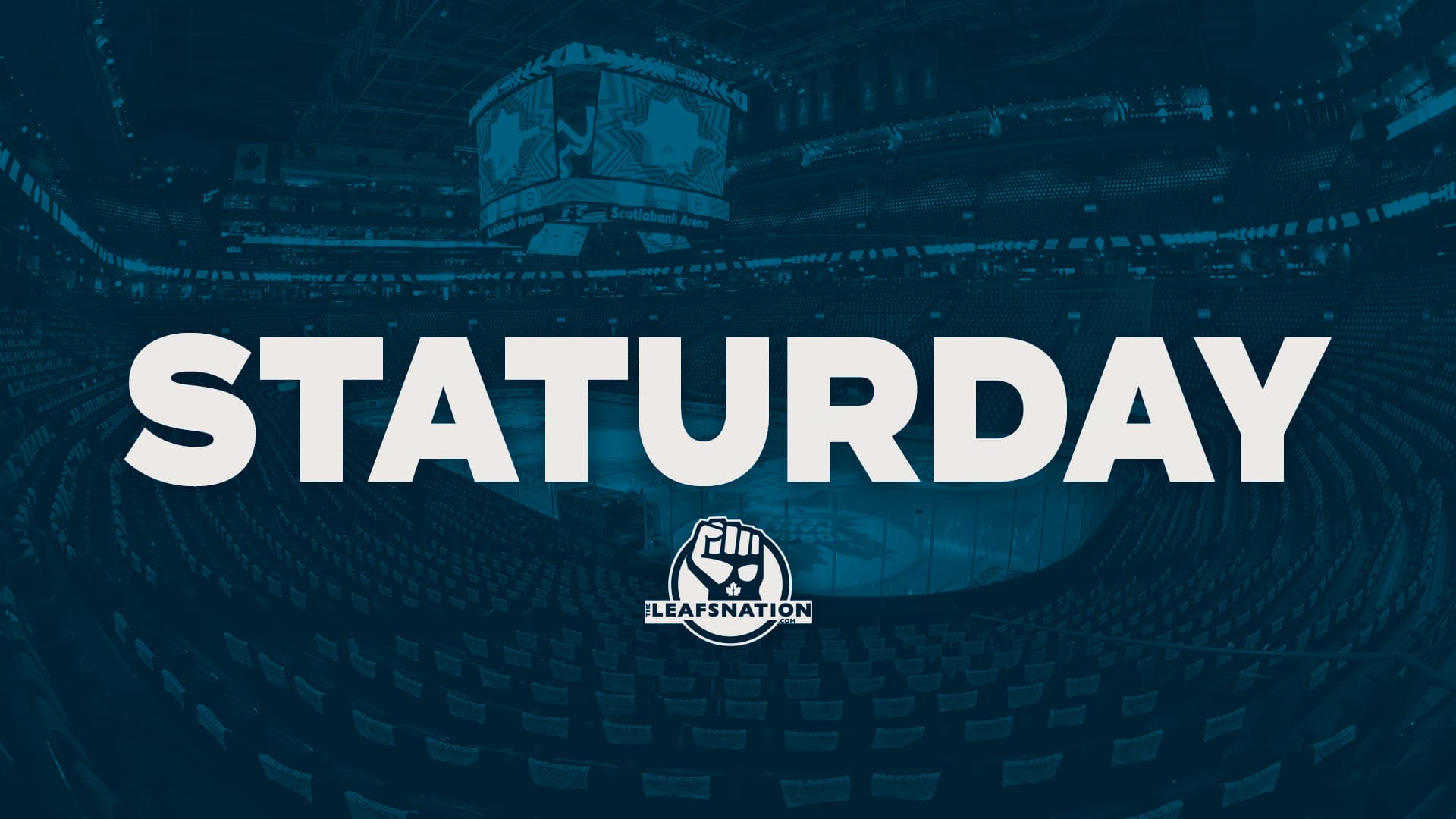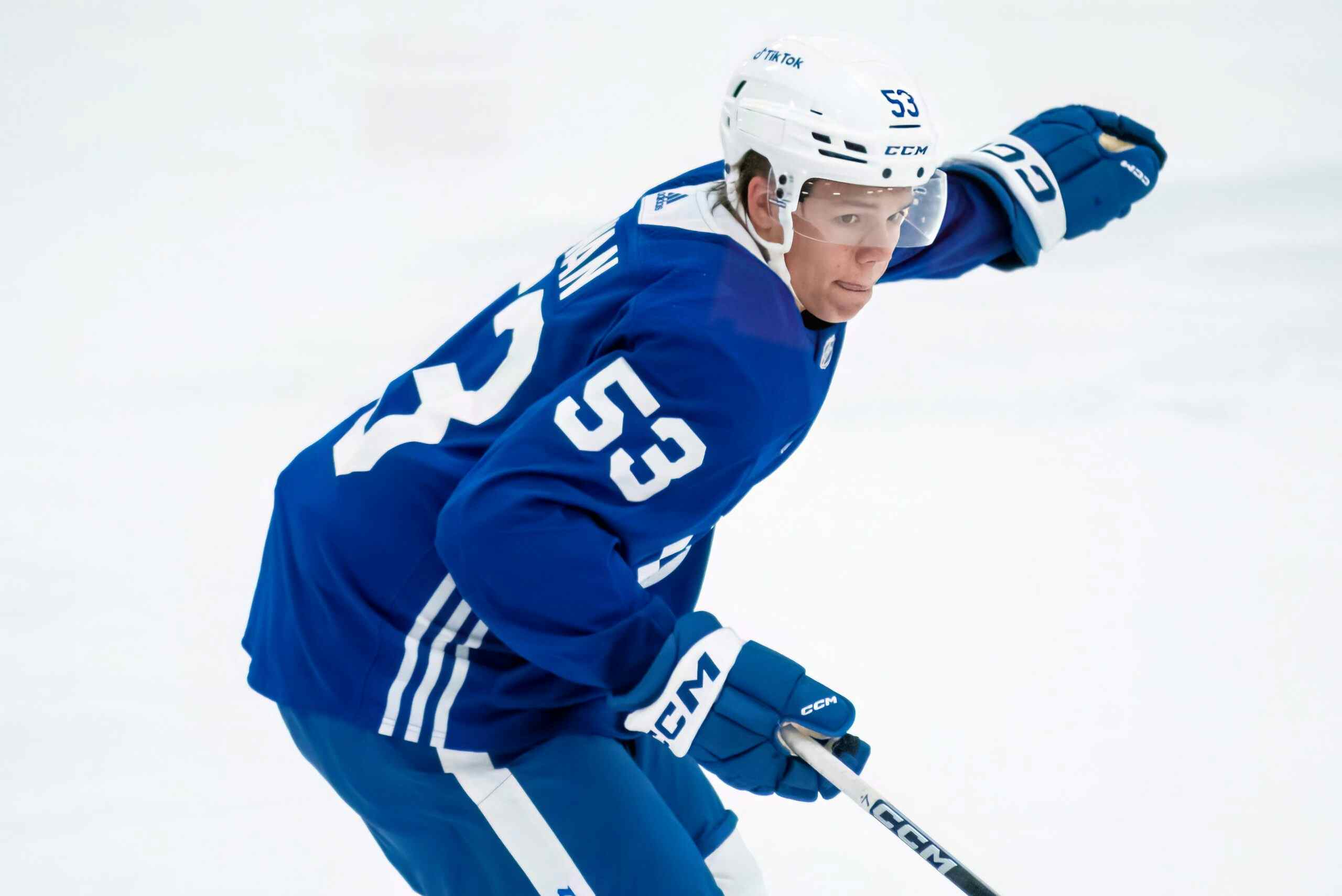Staturday Weekly Column #6: Projecting the North Standings in 2021, Pt. 2

By Ryan Hobart
3 years agoLast week for this Staturday column, I took a look at two analytical models designed to simulate the results of an NHL game. Those models were then run through for the 2021 regular season to see what it spits out. These models came from our former contributor Dom Luszczyszyn at The Athletic, and from the website Moneypuck.com.
Meanwhile, two more models have been released and are ripe for the picking. These two come from Micah Blake McCurdy at hockeyviz.com, a site we covered in Column #2 about the more interesting analytics resources available in the public sphere, and the other comes from Sean Tierney, another fantastic viz generator and former contributor at EditorInLeaf, who now runs the site ChartingHockey.ca, and is the Director of Analytics for the OHL’s Hamilton Bulldogs. Both sites are behind partial paywalls, so that you have to subscribe on Patreon to access the really fun stuff, but in this case the previews are not paywalled.
I simulated the 2020-2021 NHL regular season a million times to estimate what is likely to happen. (I used a computer to help me.) To estimate the probability of the home team winning each game I used my prediction model, Magnus. Curious readers will find lots of detail following that link, but, very briefly:I estimate the likely rosters for each team, starting from their contract list on January 4, 2021, and then weighting by past playing time. Injuries and suspensions are taken into account. For definiteness: I estimate the individual impact of each player and head coach on:
- All RFA players are expected to play a full season for their current teams;
- Mike Hoffman is taken as under contract with St Louis;
- All other PTO players are expected to not play;
- Nikita Kucherov, Jonathan Toews, Kirby Dach, Oskar Klefbom, and Alex Nylander are expected not to play.
- Shot generation and suppression, at even-strength and special teams, taking account of teammates, competition, and the effects of score, zone, coaching, and home-ice deployment;
- Rates of taking and drawing penalties
- Individual tendencies towards shooting or passing; and
- Ability to shoot or stop the puck, as appropriate.
These estimations are done using NHL-gathered input data from the past dozen regular seasons, suitably weighted; or, for a few important new players, using estimates from Hannah Stuart, a prospect expert with whom I have a long-standing partnership. Specifically this year, she has provided me with estimates for Quinton Byfield, Bowen Byram, Dylan Cozens, Liam Foudy, Kiril Kaprizov, Alexis Lafrenière, K’Andre Miller, Marco Rossi, Tim Stützle, Gabriel Vilardi, Filip Zadina, and Trevor Zegras. These estimates include playing time as well as impact.An adjustment for rest. This model contains a wealth of preview information about what the NHL 2021 season will look like. You can see what each team’s projected summary of shot attempts looks like in a heat-map-type graph, a comparative scatter plot of how each team will look at even strength and on special teams, goaltending, and more.The result we care to extract for this, out of all this awesomeness, is how the all-Canadian Scotia NHL® North Division, which of course includes our beloved Toronto Maple Leafs, and McCurdy’s bewildered Ottawa Senators.Here are my 2021 NHL projected results. To produce these results, I ranked teams based on preseason projections about how talented each team’s forwards, defenders, goalies, and special teams will be. Then, I ran through 56-game season using the intradivisional schedule to see all the different ways the season could play out. These projections do not adjust for injuries or luck because I’m not sure how to reasonably guess at those things.The “peak” for each team represents the number of standings points that team wound up with most often. The low points in the range are season outcomes that did (and therefore, can!) happen but aren’t very likely to occur (i.e. VGK could wind up with a 90-point season but I’m not betting on it).The range of outcomes is widest where a team is ranked similarly with other teams in their division. If there are a few teams with similar overall ratings (i.e. the buzzsaw East Division), teams could conceivably wind up with a wide range of win/loss outcomes because they’ll be playing in so many hotly contested games.Now, let’s get to the meat: what these two models each say about the North Division.Micah Blake McCurdy
For McCurdy’s model, there are two fun graphs showing all of the North division teams’ points projections and chances to land in each of the division places, as well as their playoff chances. Obviously Ottawa has yet again found themselves at the top, and Toronto has yet again found themselves at the top. These two things, from a mathematical projection perspective, seem nearly certain across the models. In the middle of the division there’s a lot more room to move around. One of the benefits of Micah’s model, though, is we can see the components that led to this conclusion. I won’t embed all of the charts, but they’re all available here. Some things I find interesting; Winnipeg’s excellent goaltending, compared to Vancouver’s very poor goaltending, Toronto being exactly average at finishing, Montreal taking almost no penalties, Toronto’s excellent special teams and elite expected goal generation at even strength, and Winnipeg being in the “BAD” quadrant of the first chart, shown below.
Obviously Ottawa has yet again found themselves at the top, and Toronto has yet again found themselves at the top. These two things, from a mathematical projection perspective, seem nearly certain across the models. In the middle of the division there’s a lot more room to move around. One of the benefits of Micah’s model, though, is we can see the components that led to this conclusion. I won’t embed all of the charts, but they’re all available here. Some things I find interesting; Winnipeg’s excellent goaltending, compared to Vancouver’s very poor goaltending, Toronto being exactly average at finishing, Montreal taking almost no penalties, Toronto’s excellent special teams and elite expected goal generation at even strength, and Winnipeg being in the “BAD” quadrant of the first chart, shown below.Sean Tierney
For Tierney’s model, I’ve extracted these nice little graphs of the histogram showing the results of where the team is project to land. The simulation was run multiple times, then the team’s result is plotted on the histogram and the final result is the mean (average) of those multiple results. Note that the x-axis is copy-pasted by me onto each graph, as on the website they’re shown in a column of charts with one x-axis, so those numbers are not perfectly aligned with the columns. My apologies for this.
 Again we see Toronto at the top and Ottawa at the bottom, as pretty well everyone would expect. Montreal at #2 and Vancouver second from the bottom seems to be a consistent prediction as well.I find it interesting that Edmonton, for instance, seems almost certainly in that 58-59 point range, whereas Toronto seems just as likely to get 66 points as they are to get 80. Similarly, Vancouver could easily be in the 66-point area, as likely as they’d be in the 55-point area, while Winnipeg will also almost definitely be in the 58-59 point area.
Again we see Toronto at the top and Ottawa at the bottom, as pretty well everyone would expect. Montreal at #2 and Vancouver second from the bottom seems to be a consistent prediction as well.I find it interesting that Edmonton, for instance, seems almost certainly in that 58-59 point range, whereas Toronto seems just as likely to get 66 points as they are to get 80. Similarly, Vancouver could easily be in the 66-point area, as likely as they’d be in the 55-point area, while Winnipeg will also almost definitely be in the 58-59 point area.Final Thoughts
OK, here’s what I’ve been wanting to show you: a table and a graph with the results from each of the four models we’ve looked at so far. This is the real meat and potatoes of this post.
Team Money Puck Dom Luszczyszyn Micah Blake McCurdy Sean Tierney TOTAL AVERAGE Toronto Maple Leafs 65.9 72.6 66.8 70.5 69.0 Montreal Canadiens 64.8 66.4 63.1 68.4 65.7 Calgary Flames 64.3 65.1 61.4 61.0 63.0 Edmonton Oilers 63.5 64.1 60.7 59.4 61.9 Winnipeg Jets 61.1 61.0 62.4 58.6 60.8 Vancouver Canucks 59.9 61.0 58.0 57.9 59.2 Ottawa Senators 58.3 49.1 55.5 49.0 53.0 That’s all for today folks. If you have any questions about these models, you can always contact those that create them; these people are proud of their work and happy to share the knowledge on how it is created so that more people can appreciate it. Otherwise, you can contact me at @RyanDHobart on Twitter, and I’d be happy to lend my understanding. Happy Staturday, everyone!
Recent articles from Ryan Hobart













